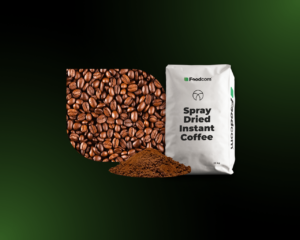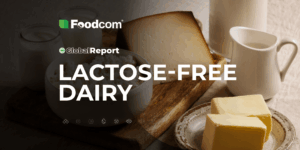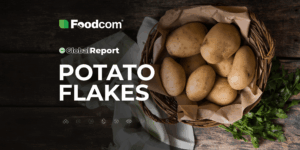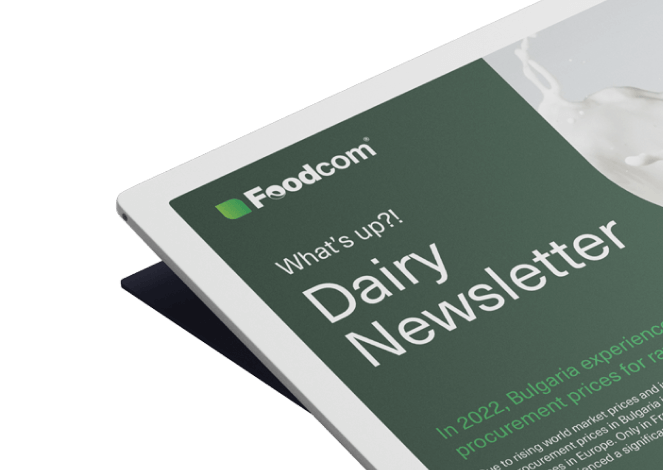- In July 2025, oversupply of cereals and oilseeds kept prices under pressure despite lower harvest forecasts in the EU.
- Record corn harvest forecasts in the US increased competition for EU exporters.
- Weakening export demand for dairy products exacerbated the problem of surpluses and price pressure in Europe.
- New US tariffs on key trading partners began to influence commodity prices more than seasonal factors.


“July 2025 did not bring abrupt turnarounds, but it became a moment of marked change in the way the market was perceived – not so much in terms of prices, but in terms of the mechanisms that shape them. The focus has shifted from structural oversupply, particularly in the cereals and oilseeds segments, to the growing importance of political factors such as the US tariff announcements. Markets are reacting less and less to production data and more to export destinations, trade tensions and the behaviour of market participants. This is a clear sign that seasonal logic is giving way to deeper and more complex trends.”
Cereals and oilseeds – more commodities than takers
The European Commission cut its forecast for this year’s cereal harvest from 283 to 278 million tonnes in July. Droughts in Romania, Bulgaria and Hungary have particularly damaged maize and sunflower.
Despite this correction, supply still outstripped demand and warehouses were filling up. This kept pressure on prices, especially as Black Sea and US exporters were offering extremely competitive sales conditions.
In the oilseed segment, the situation was more mixed. Oilseed rape yields improved markedly on the previous year, particularly in France and Germany, although variable weather in central and eastern Europe limited the full potential of the crop. Over the course of the year, EU exports of rapeseed and other oilseed crops increased by more than 25 per cent, while imports fell, increasing pressure on local markets.
In the US, August forecasts indicated a record maize harvest of 415 million tonnes, 16 million more than previous estimates and as much as 37 million more than in 2024. Although these were preliminary figures, they were already influencing sentiment in July and intensifying competition for EU exporters.
Dairy – high production, weaker demand
European dairy producers maintained high production levels in July, but demand, particularly for exports, was clearly weakening. Commodity surpluses were most evident in the cheese and milk powder segments. Warehouses were filling up and the number of transactions was decreasing. Many buyers were holding back their decisions, hoping for further price reductions.
Different products performed differently. Mozzarella continued to benefit from strong demand in catering during the summer season, while butter and maturing cheeses remained under price pressure. Increasingly, the market was influenced not by seasonal factors, but by changes in international trade and political tensions.
Cocoa – weather restricts yields
In the two largest cocoa producing countries, Côte d’Ivoire and Ghana, weather conditions were not favourable to the crop. Rainfall was well below normal and cool nights slowed the development of young fruit and increased the risk of diseases, including black rot.
Field surveys showed that flower and fruit damage was 15-20 per cent higher than expected in May. The industry estimated that production in the 2025/26 season could fall by around 10 per cent compared to last year.
Although the official forecasts of the International Cocoa Organisation (ICCO) have not yet been revised, contract prices had already started to rise in July. The market was pricing in the risk of a supply constraint, with exporters reporting a decline in bean quality.
Coffee – from record harvest to risk of tariffs
The Brazilian and Indonesian coffee harvests were very good in July, boosting supply and pushing down the prices of robusta and arabica to their lowest levels in months. Towards the end of the month, news emerged of possible trade barriers in US-Brazil relations.
Since the beginning of August, some of these announcements have become a reality, increasing the tension in the market and halting the earlier downward trend in prices.
Customs and politics – an increasing influence on the market
Already in July, the mere prospect of new trade barriers had a clear impact on futures valuations, particularly for coffee, cocoa and oilseed products. Markets began to factor into prices the risk of increased logistics costs and possible disruptions to supply chains, even before the regulations formally came into force. In early August, these announcements became a reality and the new tariffs announced by the Donald Trump administration took effect.
As part of so-called reciprocal tariffs, the US introduced tariffs of between 10 and 50 per cent on countries that the White House believes benefit excessively from trade with the US. India was subjected to a 25 per cent duty in response to imports of cheap Russian oil that went to the US after refining, among other countries. Canada faces a 35 per cent duty on a wide range of industrial and consumer products, and Brazil a 50 per cent duty on agricultural products and raw materials. Taiwan was subject to a 20 per cent rate and Switzerland to almost 39 per cent on high-value-added export products.
An agreement was reached with the European Union. Instead of the initially threatened tariffs of 30 to 50 per cent, a rate of 15 per cent was introduced on most goods. In return, the EU pledged to increase imports of US LNG, oil and natural gas.
The reaction of the markets was immediate. The Indian rupee weakened and stock indices in the pharmaceutical, IT and automotive sectors fell sharply. Analysts warn of major disruptions in supply chains and pressure on exporters to adjust prices, logistics and production. Donald Trump has additionally announced the possibility of a 100 per cent tariff on oil trade if India does not change its stance on Russian energy imports.
Conclusion
July 2025 did not bring spectacular turnarounds, but clearly solidified new directions. Oversupply remains a key challenge, and prices are increasingly influenced by policy decisions and changes in global trade, not just crop forecasts. Trends are changing gradually, but in ways that will be difficult to reverse.
![Monthly Agro Commodities Market Overview [July] Monthly Agro Commodities Market Overview [July]](https://foodcom.pl/wp-content/uploads/2025/08/monthly-agro-commodities-market-overview.png)


![Analiza rynku MSM w 2025 [Global Report] Analiza rynku MSM w 2025 [Global Report]](https://foodcom.pl/wp-content/uploads/2025/08/global-report-msm-300x150.png)




